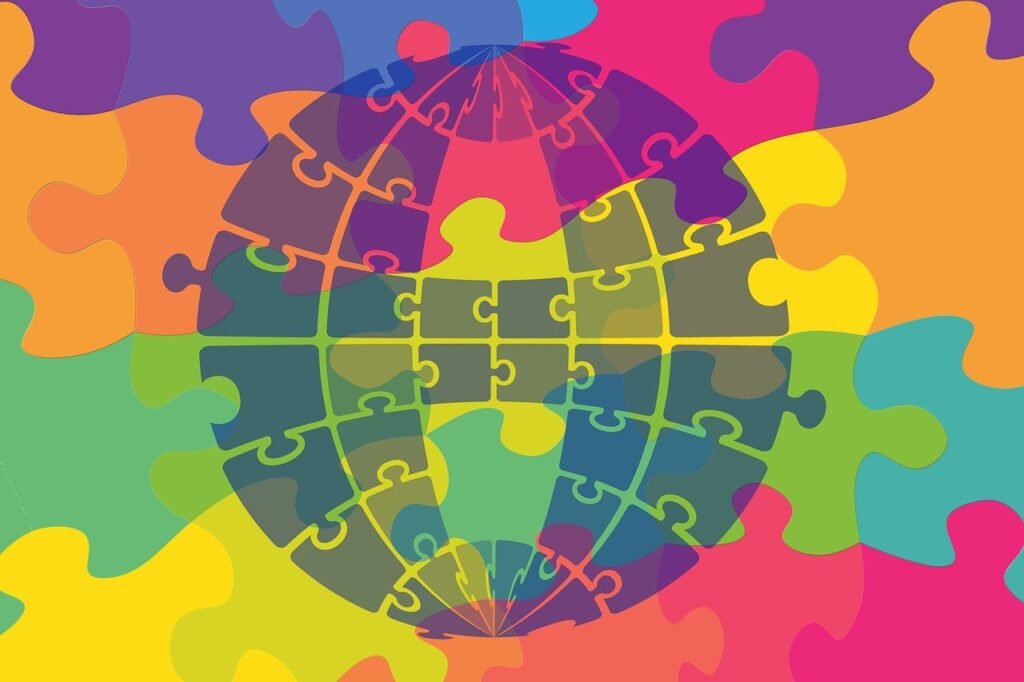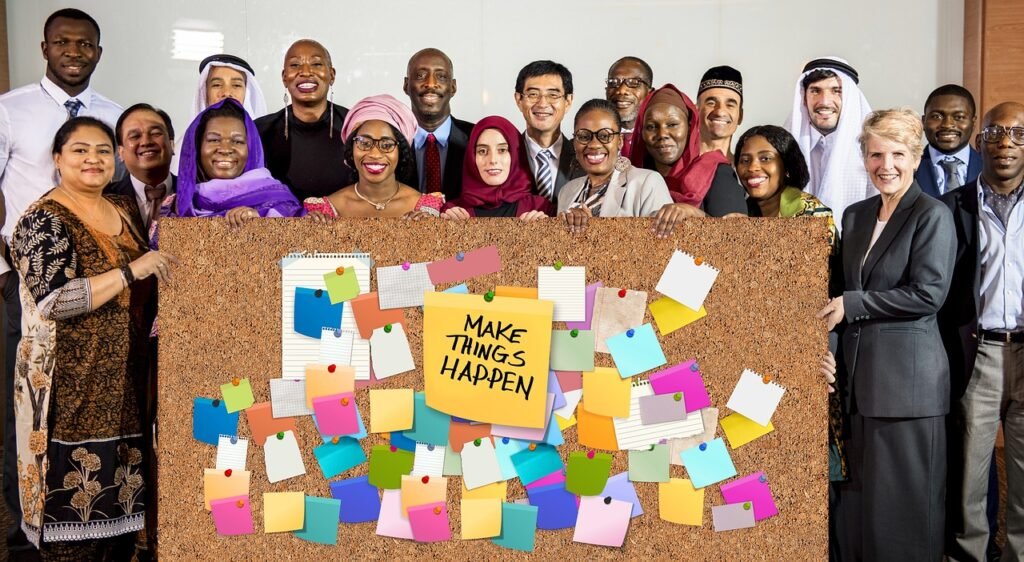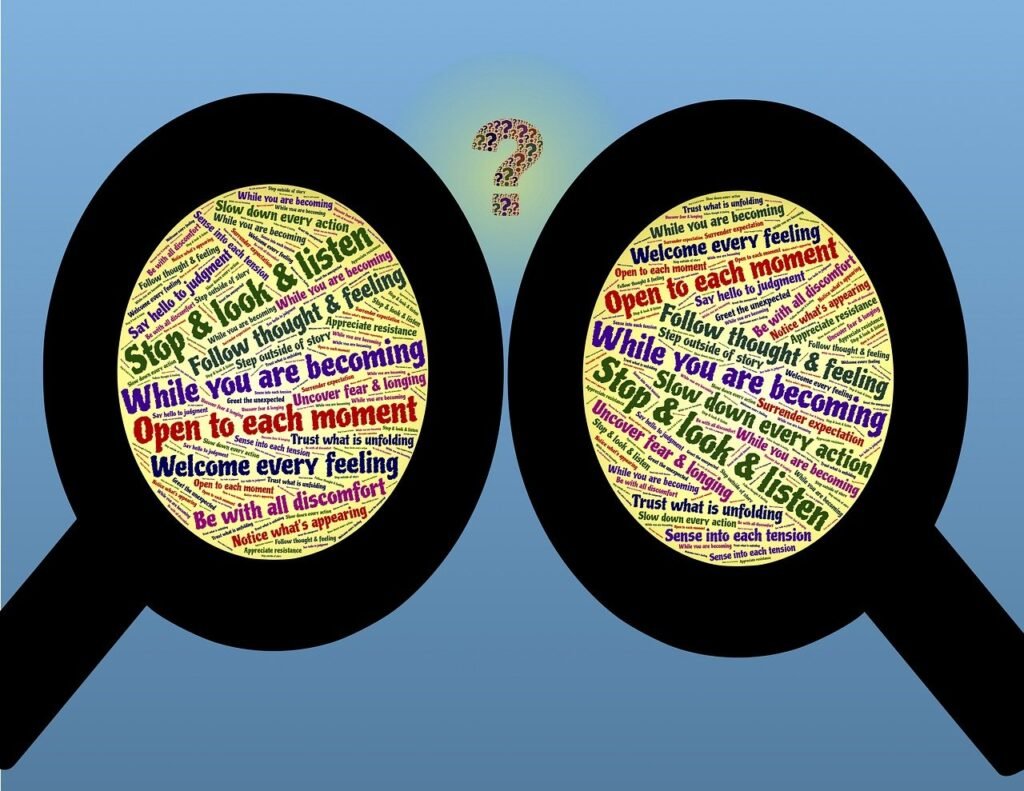
Intro
Positive change is a powerful force that can transform individuals, communities, and even entire societies. At its core, positive change is about creating a more inclusive and equitable world for all. However, this transformation cannot happen overnight or by the actions of one person alone. It requires a collective effort and a conscious shift towards building a culture of inclusion. In this blog post, we will explore seven strategies that can help turn good intentions into meaningful impact, creating a ripple effect of positive change in our communities and beyond. So, let’s dive in and discover how we can all contribute to building a more inclusive and welcoming world.
The Power of Positive Intention in Creating an Inclusive Environment
Positive intention is the driving force behind creating an inclusive environment. When we approach diversity and inclusion with an open mind and a genuine desire to make a difference, we set the stage for meaningful change. It starts with recognizing the power of our thoughts and actions and how they can shape the world around us.
Thought-provoking ideas and conversations can be the catalyst for positive change. By engaging in open dialogue and challenging our own biases, we create space for growth and understanding. When we affirm the value of every individual, regardless of their background or identity, we promote a sense of belonging and acceptance. This affirmation can inspire others to do the same and contribute to a culture of inclusivity.
Inclusive environments require the active participation of all individuals. Just as a conservationist works tirelessly to protect the environment, we can become activists for inclusivity and equality. By organizing events and initiatives that promote diversity, we can foster social awareness and empower others to take action.

Philanthropy and giving back are powerful ways to create a global impact. When we actively promote sustainable living and support organizations that prioritize inclusivity, we are making significant contributions to a more equitable world. By aligning our actions with our values, we can demonstrate our commitment to building an inclusive society.
Being socially aware and environmentally conscious allows us to take responsibility for the impact we have on others and the world. This awareness can drive us to actively seek out diverse perspectives and learn from different cultures and experiences. By embracing diversity and actively promoting inclusivity, we create an environment where everyone feels valued and respected.
Strategy One: Implementing Diversity Training

Implementing diversity training is a crucial strategy for building a culture of inclusion. This training provides individuals with the knowledge and tools needed to understand and appreciate the diverse backgrounds and identities of others. It helps to break down barriers, challenge biases, and foster empathy and understanding.
Diversity training can take many forms, from workshops and seminars to online courses and interactive activities. The key is to create a safe and open environment where participants can engage in meaningful dialogue and explore their own biases and assumptions. By learning about different cultures, experiences, and perspectives, individuals can gain a broader understanding of the world around them.
One of the main benefits of diversity training is that it helps individuals recognize their own unconscious biases. We all have biases, whether we realize it or not, and they can influence our thoughts, actions, and decision-making. Through diversity training, individuals can learn to identify and challenge these biases, allowing for more inclusive and equitable practices.
Another important aspect of diversity training is education about the history of systemic discrimination and inequality. Understanding the historical context of discrimination is crucial in order to address its present-day effects. By learning about the struggles and achievements of marginalized groups, individuals can develop a deeper sense of empathy and a stronger commitment to creating positive change.
Implementing diversity training also sends a powerful message to employees and stakeholders. It shows that the organization is committed to fostering an inclusive and respectful environment. This can lead to increased employee satisfaction, productivity, and retention. It can also attract a more diverse pool of talent, as individuals are more likely to seek out organizations that prioritize diversity and inclusion.
Strategy Two: Cultivating Open Conversations about Differences

Creating a culture of inclusion requires open and honest conversations about our differences. Cultivating open conversations about differences is a crucial strategy for building understanding and empathy among individuals from diverse backgrounds. When we engage in these conversations, we break down barriers, challenge assumptions, and foster a sense of belonging and acceptance.
One of the key benefits of open conversations about differences is that they allow us to gain a deeper understanding of perspectives that may be different from our own. By actively listening to others and seeking to understand their experiences, we expand our worldview and develop a broader perspective. These conversations can challenge our own biases and assumptions, enabling personal growth and learning.
Open conversations about differences also provide an opportunity to address issues of systemic discrimination and inequality. By openly discussing the challenges faced by marginalized groups, we can work together to identify solutions and create positive change. These conversations can help to raise awareness and promote social action, whether through philanthropy, advocacy, or other means of making a difference.
Additionally, cultivating open conversations about differences can contribute to social awareness and global sustainability. By discussing topics such as social justice, environmental issues, and global warming, we can raise consciousness and inspire action. These conversations can lead to individual and collective efforts to create positive change and address the pressing issues facing our world.
Strategy Three: Encouraging Personal Growth and Learning
Encouraging personal growth and learning is a vital strategy for building a culture of inclusion. When individuals are empowered to continually learn and grow, they are better equipped to contribute to positive change in their communities and beyond.

One way to encourage personal growth and learning is by providing access to educational opportunities. This can include offering training programs, workshops, and seminars that focus on topics such as diversity, equity, and inclusion. By investing in the growth and development of individuals, organizations can create a more inclusive and knowledgeable workforce.
Another important aspect of encouraging personal growth and learning is promoting a growth mindset. This involves fostering a belief that individuals have the capacity to learn and grow throughout their lives. By encouraging individuals to embrace challenges, persist in the face of obstacles, and view failure as a learning opportunity, organizations can cultivate an environment that supports personal growth and development.
Mentorship programs are also effective in encouraging personal growth and learning. Pairing individuals with mentors who have experience and knowledge in areas of interest can provide guidance, support, and opportunities for growth. Mentors can help individuals develop new skills, expand their networks, and gain valuable insights into different perspectives.
Additionally, organizations can encourage personal growth and learning by creating a culture that values continuous improvement. This involves providing regular feedback, recognition, and opportunities for individuals to set and achieve goals. When individuals feel supported in their growth and development, they are more likely to actively engage in personal and professional growth.
Overall, encouraging personal growth and learning is essential for building a culture of inclusion. By investing in educational opportunities, promoting a growth mindset, offering mentorship programs, and creating a culture of continuous improvement, organizations can empower individuals to make a meaningful impact in their communities.
Strategy Four: Practicing Empathy and Understanding
Practicing empathy and understanding is a fundamental strategy for building a culture of inclusion. It involves actively listening to others, putting ourselves in their shoes, and genuinely trying to understand their perspectives and experiences. When we practice empathy, we create a safe and welcoming environment where everyone feels valued and respected.

Empathy starts with being present in the moment and truly listening to others without judgment or preconceived notions. It means taking the time to understand someone’s background, challenges, and aspirations. By doing so, we can develop a deeper sense of connection and empathy towards their unique circumstances.
Understanding and accepting that everyone has different life experiences is key to building empathy. We must recognize that our own experiences may not be the same as others, and that is okay. By acknowledging these differences and actively seeking to understand them, we can foster a greater sense of empathy and compassion.
Another important aspect of practicing empathy is recognizing the power dynamics at play in society. By acknowledging the privilege or disadvantage we may have, we can work towards leveling the playing field and creating a more equitable society. This involves using our resources, whether that be time, money, or skills, to uplift others and support social causes.
Philanthropy plays a crucial role in practicing empathy. It is not just about giving money, but about actively engaging in causes that promote social justice and equality. By donating our time, skills, or resources to organizations that champion inclusivity, we can make a significant impact in creating positive change.
Social awareness is also vital in practicing empathy. By staying informed about the social issues affecting our communities and the world at large, we can develop a deeper understanding of the challenges faced by marginalized groups. This awareness allows us to take informed action, whether that be advocating for change, participating in peaceful protests, or supporting initiatives that promote inclusivity.
Strategy Five: Supporting Individual Contributions and Recognizing Uniqueness
In our journey towards building a culture of inclusion, it is crucial to recognize and support the unique contributions that individuals bring to the table. Everyone has their own set of talents, skills, and perspectives that can enrich our communities and drive positive change. By fostering an environment that values and celebrates individual uniqueness, we can create a space where everyone feels empowered to make a difference.
One way to support individual contributions is through mentorship and guidance. Pairing individuals with mentors who can provide support and advice can help them tap into their full potential. Mentors can offer insights, share their experiences, and provide guidance to help individuals grow both personally and professionally. By investing in mentorship programs, organizations can create opportunities for individuals to develop their unique talents and contribute to the collective goal of inclusivity.
Recognizing and celebrating diversity is also crucial in supporting individual contributions. By embracing and appreciating different perspectives, experiences, and backgrounds, we create a culture that values and respects individual uniqueness. This can be achieved through initiatives such as employee spotlights, where individuals are recognized and celebrated for their achievements and contributions. By shining a light on the unique talents and skills of individuals, we encourage others to embrace their own uniqueness and contribute to positive change.

Another way to support individual contributions is by creating opportunities for individuals to pursue their passions and interests. Whether it is through workplace flexibility, time off for volunteer work, or providing resources for personal development, organizations can empower individuals to explore their interests and make a difference in their own unique ways. By supporting individuals in pursuing their passions, organizations foster a sense of fulfillment and purpose, which in turn contributes to a more inclusive and vibrant workplace culture.
Additionally, promoting social awareness within organizations can further support individual contributions. By fostering an environment that encourages employees to engage in philanthropy and give back to their communities, organizations can empower individuals to make a meaningful impact. This can be done through initiatives such as volunteering programs, fundraising events, or partnerships with local non-profit organizations. By supporting individuals in their philanthropic endeavors, organizations not only contribute to positive social change but also demonstrate their commitment to creating an inclusive and socially responsible culture.
Strategy Six: Establishing Transparent Communication Channels
Building a culture of inclusion requires open and transparent communication channels. When organizations prioritize clear and honest communication, they create an environment where individuals feel valued and heard. Transparent communication channels enable individuals to express their thoughts, concerns, and ideas without fear of judgment or retribution. This promotes a sense of belonging and fosters a culture of inclusivity.
One way to establish transparent communication channels is by implementing regular feedback mechanisms. This can involve performance evaluations, surveys, or open-door policies where individuals can provide feedback and express their opinions. By actively seeking feedback, organizations show a commitment to listening and responding to the needs and concerns of their employees. This creates a sense of trust and empowers individuals to actively participate in creating positive change.

Establishing transparent communication channels also involves providing clear and accessible information. This can include sharing organizational goals, strategies, and decision-making processes. When individuals understand the reasoning behind certain decisions, they are more likely to feel included and engaged. Transparent communication also ensures that individuals have the necessary information to make informed decisions and contribute meaningfully to their work.
Another aspect of transparent communication channels is promoting open dialogue and discussion. Organizations can create platforms for individuals to share their ideas, experiences, and perspectives. This can include regular team meetings, brainstorming sessions, or virtual forums where individuals can engage in thoughtful conversations. By encouraging open dialogue, organizations foster collaboration, innovation, and a sense of community.
Furthermore, establishing transparent communication channels requires organizations to address and acknowledge any challenges or issues that arise. By openly discussing problems, organizations demonstrate a commitment to finding solutions and making necessary improvements. This can be done through regular town hall meetings, employee feedback sessions, or dedicated platforms for reporting concerns. By addressing challenges head-on, organizations promote accountability and ensure that all individuals have a voice in the decision-making process.
In conclusion, establishing transparent communication channels is a vital strategy for building a culture of inclusion. By prioritizing open and honest communication, organizations create an environment where individuals feel valued, heard, and empowered to contribute their unique perspectives and ideas. Transparent communication channels foster trust, collaboration, and a shared sense of purpose, ultimately leading to a more inclusive and welcoming workplace.
